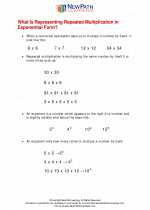Edges
In geometry, an edge is a line segment where two faces of a solid figure meet. It is where two flat surfaces of a three-dimensional shape come together. For example, a cube has 12 edges, as each of its 6 faces is connected to 4 edges.
Properties of Edges
1. Edges have length and direction.
2. The number of edges a solid figure has depends on its shape. For example, a rectangular prism has 12 edges, while a cylinder has 2 edges.
3. Edges are straight and can be measured using a ruler or other measuring tools.
Examples of Edges
1. A cube has 12 edges.
2. A pyramid has 8 edges.
3. A sphere has 0 edges, as it does not have any flat surfaces.
Study Guide
To study edges, it is important to understand the following:
1. The definition of an edge in geometry.
2. How to identify and count the number of edges on various three-dimensional shapes.
3. The properties of edges, including their length, direction, and straightness.
4. Practice measuring the length of edges using a ruler or other measuring tools.
5. Compare and contrast the number of edges on different three-dimensional shapes.
Understanding edges is crucial in geometry as it provides the foundation for understanding the structure and properties of three-dimensional shapes.
.◂Math Worksheets and Study Guides Sixth Grade. Repeated Multiplication to Exponents

 Worksheet/Answer key
Worksheet/Answer key
 Worksheet/Answer key
Worksheet/Answer key
 Worksheet/Answer key
Worksheet/Answer key
